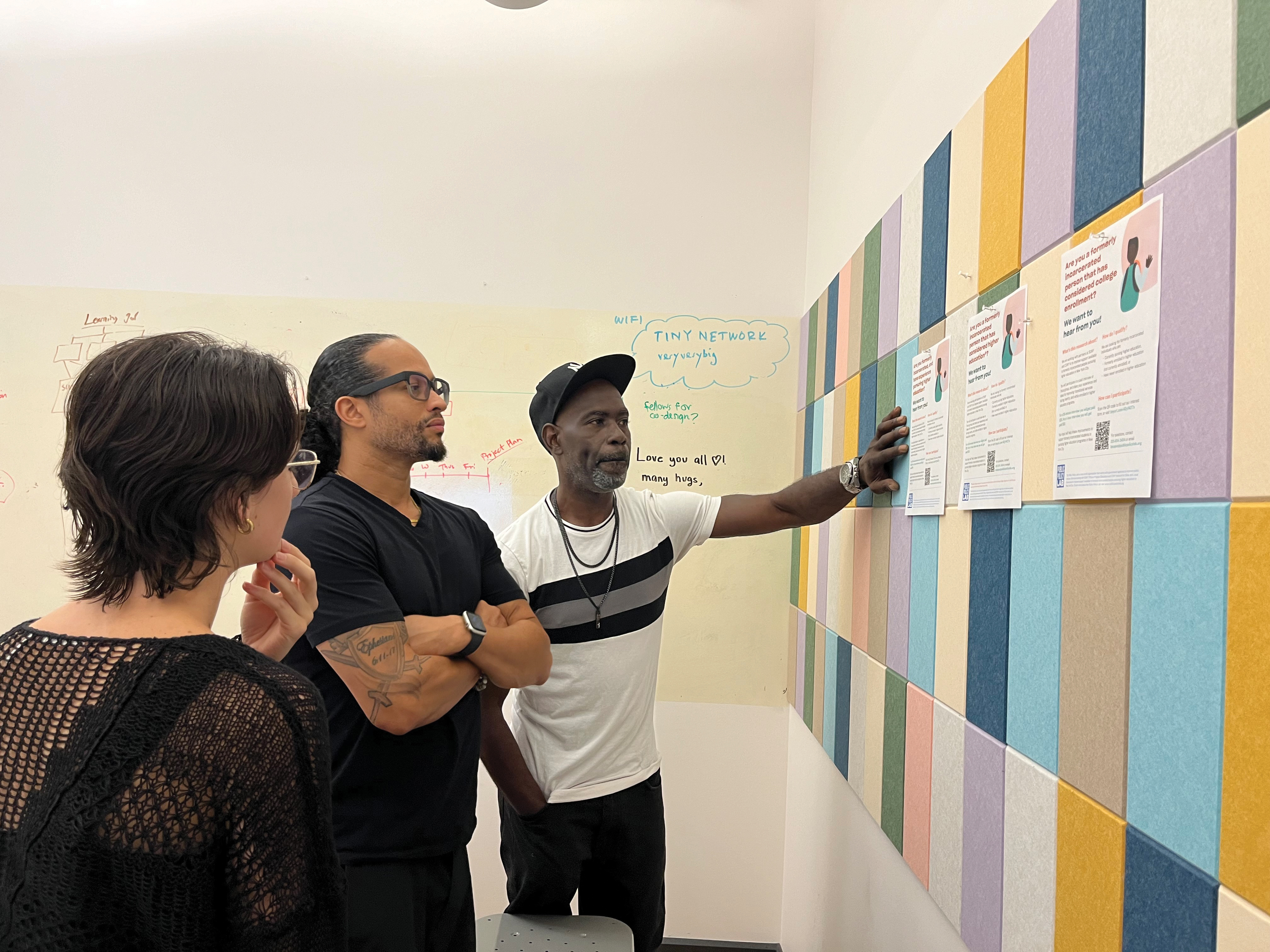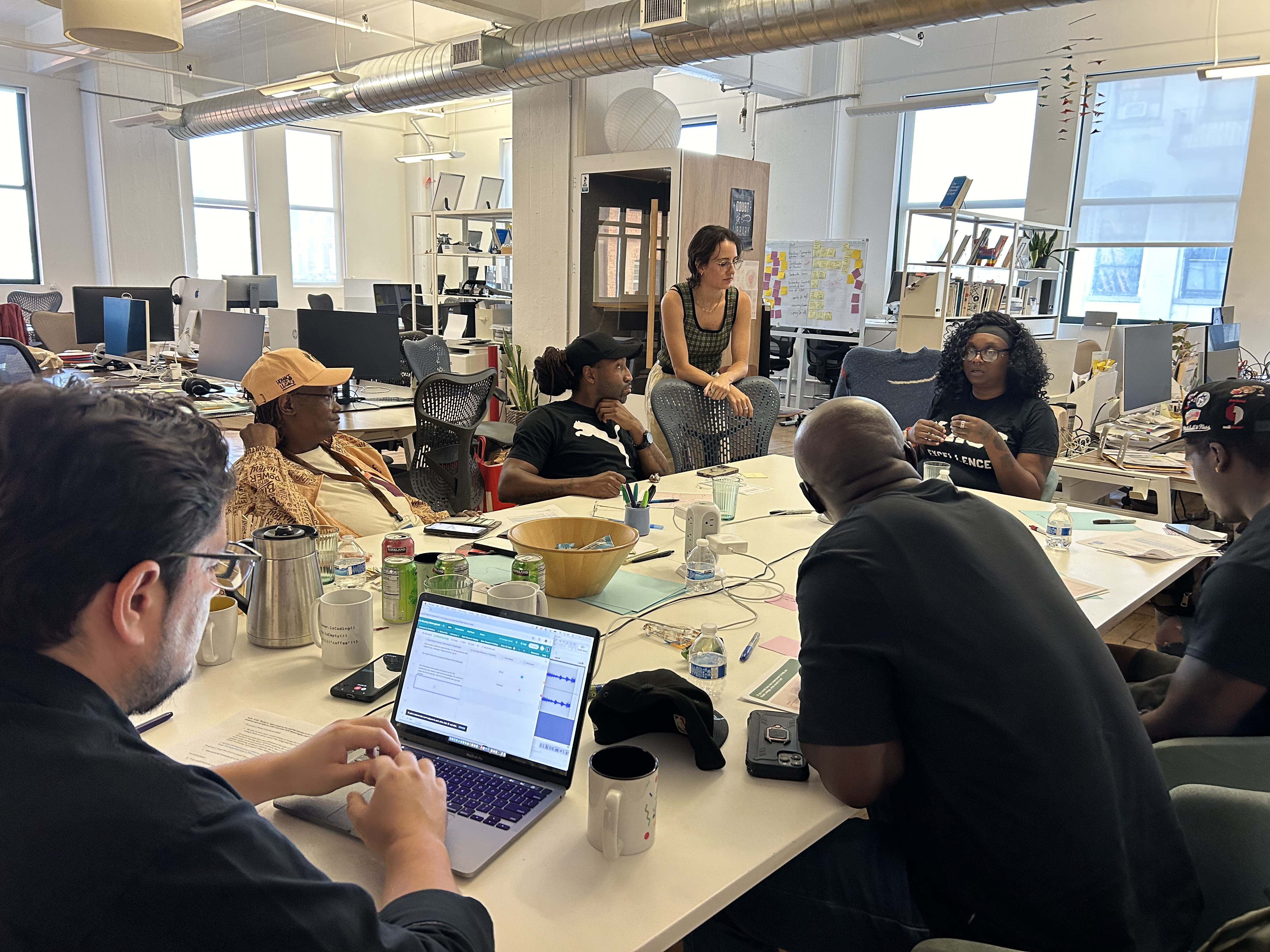Higher Education in Reentry Reimagined (HERR)
The Project
The State University of New York (SUNY) is committed to providing educational equity for incarcerated New Yorkers. However, connecting people to higher education opportunities upon release remains challenging. Public Policy Lab worked with university systems in New York City and the state to improve access to quality education for students post release and build more pathways from prison to college.
You can find the full case study here.
Partners
-
State University of New York (SUNY) Office of Higher Education in Prison (HEP)
-
City University of New York (CUNY) Institute for State and Local Governance (ISLG)
-
Mayor’s Office for Economic Opportunity (NYCO)
Role
This was a highly collaborative project where I contributed to all steps of the process including research operations, and recruitment. Most notably, I helped manage peer researchers, formerly incarcerated students that we hired, and led co-design with SUNY HEP fellows.
 Co-designing recruitment material with peer researchers
Co-designing recruitment material with peer researchersProject Goals
- Strengthen collaboration between SUNY, CUNY, CBOs, and other stakeholder groups to more seamlessly support formerly incarcerated students in NYC to pursue higher education programs.
- Co-design and develop resources with formerly incarcerated students that will improve their experience continuing higher education after prison.
Research
We conducted desk research, held semi-structured interviews and group interviews. We spoke with university staff, professors, reentry services providers, and formerly incarcerated people.
I created discussion guides for semi-structured interviews and design stimuli for the group interview. I also co-led both engagements with our peer reserachers.
Inquiry Areas
- What drives people’s decisions to continue their education after their release from prison?
- What enables people to pursue higher education after their release from prison?
- What supports the ongoing success of formerly incarcerated students once enrolled in CUNY and other NYC-based higher education programs?
 Facilitating a focus group with formerly incarcerated current students (all consented to this photo)
Facilitating a focus group with formerly incarcerated current students (all consented to this photo) Welcome packets and stimuli for focus group participants
Welcome packets and stimuli for focus group participantsResearch Shareout
For the research share-out with partners and project contributors, we invited them to our PPL office for an immersive walk-through of our data.
I help select and edit video and audio footage of our interviews with formerly incarcerated people into short videos for our partner audience. (Example here)

I helped scrub and clean qualitative data, and also selected and edited video and audio footage of our interviews with formerly incarcerated people into short videos. (Example here.)
 Share-out participants watching a video clip of a formerly incarcerated law students speak about his experience receiving support during college after release from prison
Share-out participants watching a video clip of a formerly incarcerated law students speak about his experience receiving support during college after release from prisonSyntheis
During synthesis, the goal was to arrive at concepts that reflected the emerging patterns and shared needs.
As an experiment, I created a map of our findings to see if the connections and associations between them revealed new meaning or opportunities.
 Synthesis map
Synthesis map
We created synthesis workshops with our partners to hone in on concepts that balanced feasibility, and impact. Each concept was supported by findings and quotes from research.
 Synthesis Workshop #1
Synthesis Workshop #1
What We Designed
We worked with reentry providers and formerly incarcerated people to co-design programs and products focused on the following goals:
- Strengthening partnerships between reentry providers and university faculty and staff.
- Combating stigma around the reentry experience.
Because of my experience and knowledge of Restorative Justice, we were able to present a compelling argument for community-building amongst reentry providers and students using restorative practices. I led the co-design process with formerly incarcerated students to ensure that they were both shaping and leading the conversations that they wanted to have. I trained our two peer researchers and our partners at SUNY in circle-keeping.
Final Intervention: The Roundtable for Higher Education in Reentry Reimagined (HERR): A Circle Series.
The roundtable brings together service providers, educators, and formerly incarcerated students to discuss how the group can enhance their collaboration in support of formerly incarcerated students pursuing higher education.
Inspired by Indigenous practices and the principles of restorative justice, the roundtable uses a “community-building circles” approach, which emphasizes equitable sharing, deep listening, and relationship building while collaborating towards a shared goal. These conversations will build relationships to dismantle silos in the reentry and education support networks available to formerly incarcerated people.
Deliverables
Though I focused primarily on the circle facilitation training materials, our team collectively created:
- An educational video about the challenges facing formerly incarcerated students in reentry,
- An introductory presentation for onboarding new participants to the roundtable events, clarifying the events’ mission and vision,
- A circle facilitation guide for those facilitating the community-building circle during each roundtable event.
We hosted the first roundtable in February 2025 with twenty representatives from higher education and reentry service providers. The session began with a screening of the video to share learnings from PPL’s research and establish a shared understanding of the reentry experience amongst roundtable participants.
 Roundatble participants in circle reflecting on the topic of Shared Purpose
Roundatble participants in circle reflecting on the topic of Shared PurposeOutcome
Five more gatherings occured throughout 2025. By prioritizing community building amongst the wider reentry and higher education network in NYC, the Roundtable for HERR sets an example for a more human-centered future in systems change work.
In the next 3-6 months, we hope these tools will help to:
- Enhance collaboration throughout the reentry support network.
- Streamline referral pathways for students between reentry providers and college programs.
- Increase awareness of the challenges facing formerly incarcerated people returning to higher education.
In the longer term, we hope the tools will lead to:
- Increased enrollment to higher education institutions in NYC post-release from NY State Prisons.
- Increased graduation rates for formerly incarcerated students.
Challenges
Although a committed core of members remains, attendance at gatherings has steadily declined. Additionally, high-pressure roles at reentry organizations and long hours behind a computer can make the two-hour, in-person gatherings a significant logistical burden for staff participants. Balancing schoolwork, family and work life is already a full plate for the formerly incarcerated facilitators. However, given the foundational ethos of restorative justice and community-building circles, we’ve resisted compromising on the in-person experience for the circle series. These trade-offs highlight tensions between practical constraints and the project's core values and intended impact.
Additionally the scope of the work did not include a pilot period where we could have stayed more involved to trouble shoot with our partners. Although we have remained close, a key member of the implementation team left their role at SUNY HEP, which left a gap in initiative management.